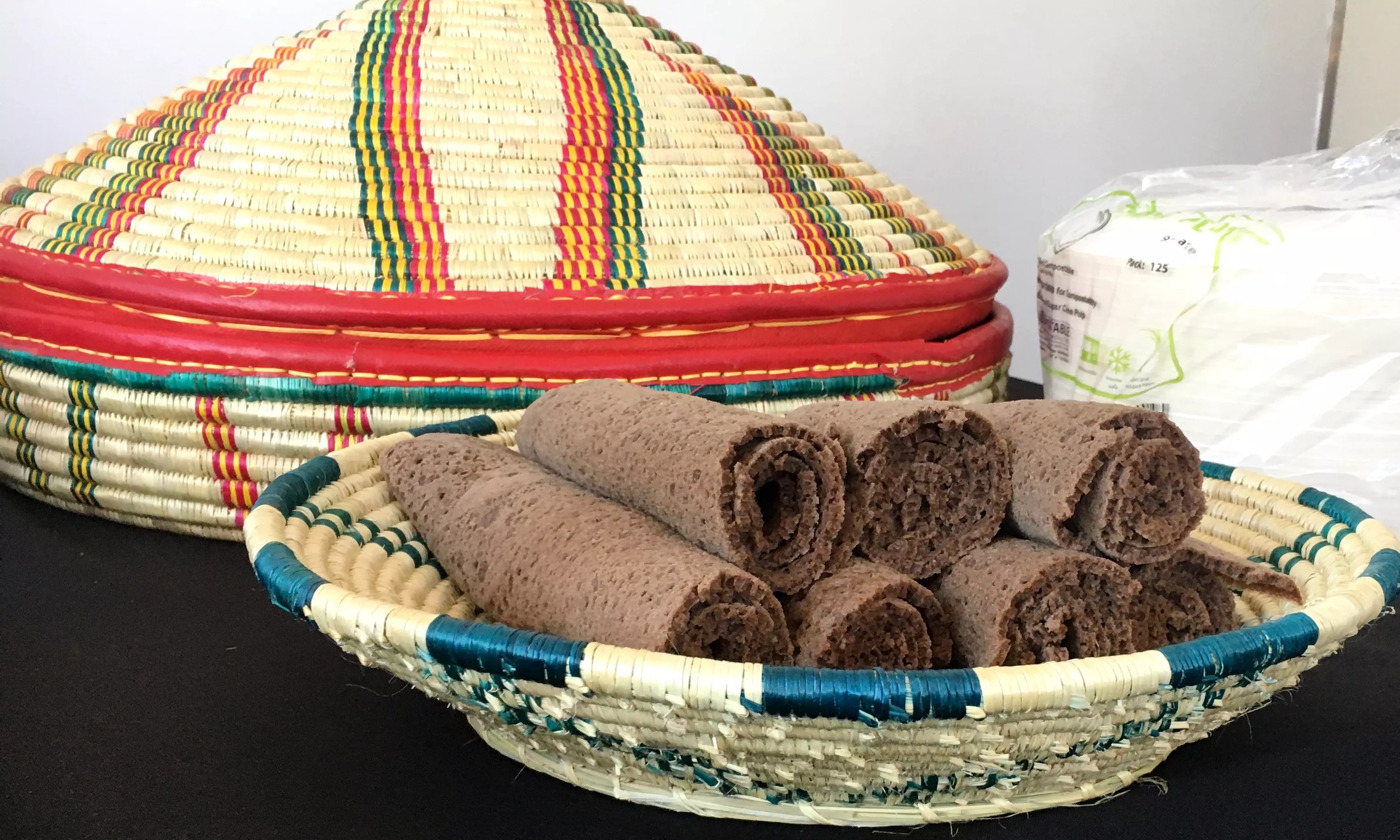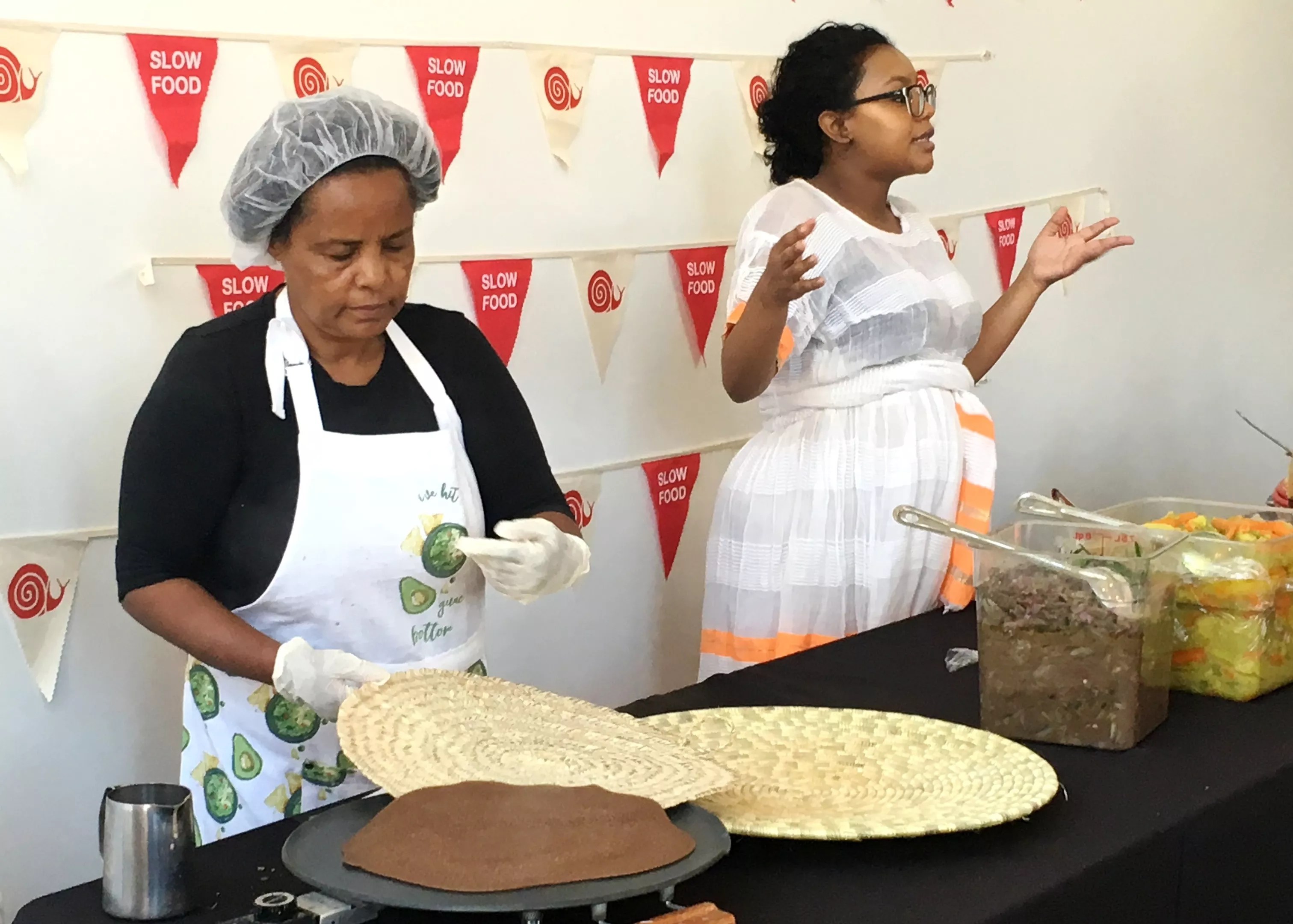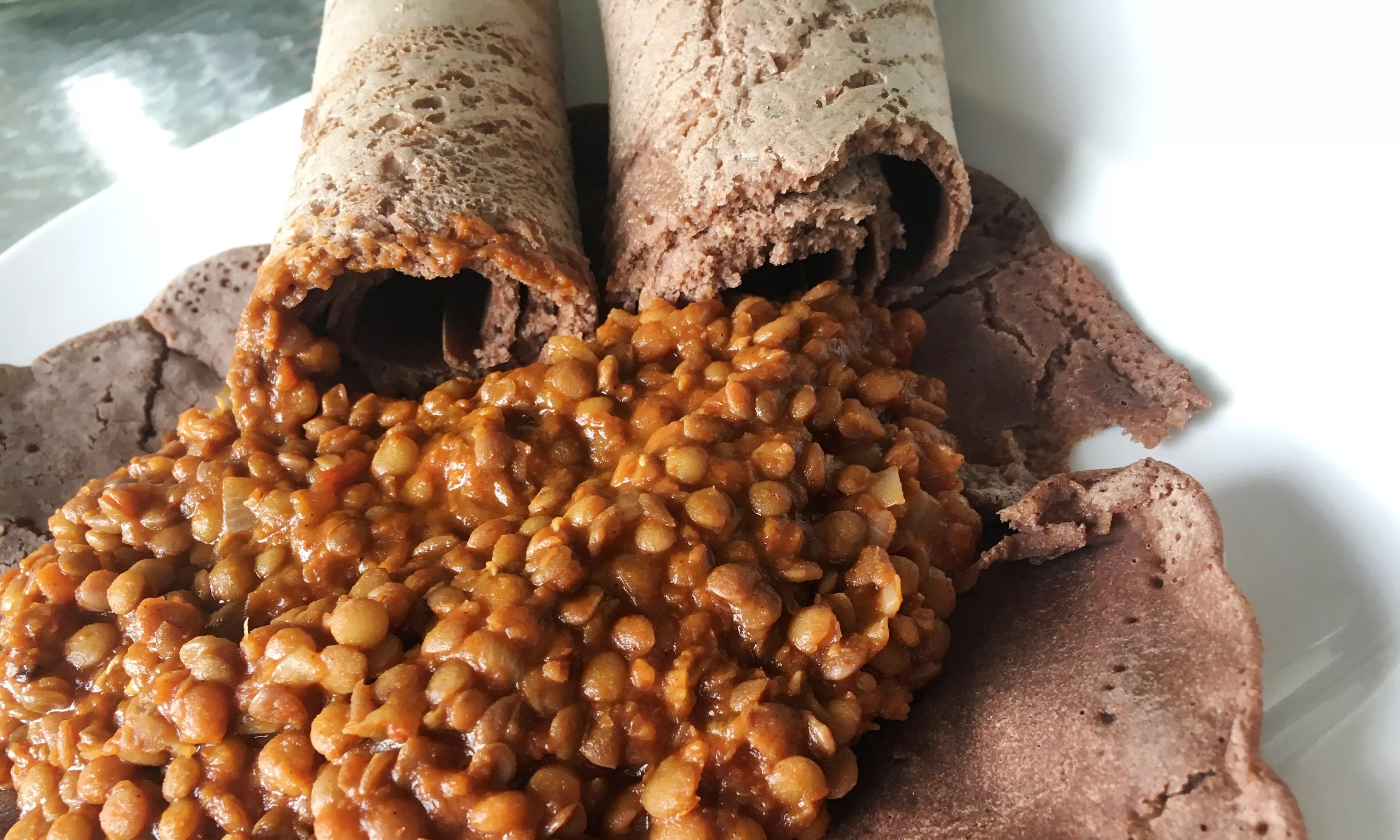
Mark Antonation

Audio By Carbonatix
The first time I tried making injera, I poisoned my wife.
I was cocky in my conviction that I could pull off the tricky Ethiopian flatbread that gets its tangy flavor from slow fermentation, much like sourdough bread. Too cocky, as it turns out, because the fermentation went awry, and my wife and I both ended up with a week-long case of food poisoning.
The fault was not in the recipe, but in my approach. I’d eaten injera in many Ethiopian restaurants in Denver and Aurora, and it seemed easy enough – nothing more than a giant pancake made with teff flour (milled from a nutritious grain that’s been part of the Ethiopian diet for thousands of years). But I failed to respect tradition and culture, and rather than talk to Ethiopian cooks, I just did what passes for research in the Internet age: I Googled a couple of recipes.
In its purest form, injera is nothing more than teff flour and water. Like other grains, teff holds microflora that create fermentation when the conditions are right. So mixing teff flour and water in the correct proportions and leaving it to rest at a moderate temperature for a few days should result in a sour batter free of harmful pathogens, since the acidity of the batter is high enough to prevent the growth of unwanted bugs. In Ethiopian kitchens, cooks skim off the water that rises to the top of the injera batter and save some of it for the next batch, just like sourdough bread makers maintain a starter. This allows the fermentation to kick off quickly, one of the keys to a safe, finished product.
Denver, make your New Year’s Resolution Count!
We’re $14,000 away from our End-of-Year campaign goal, with just a couple of days left! We’re ready to deliver — but we need the resources to do it right. If Westword matters to you, please contribute today to help us expand our current events coverage when it’s needed most.

Chef Genet Gebeye and her daughter demonstrate the art of making Ethiopian injera.
Mark Antonation
That’s the basic science, but without advice from experts and rounds of practice, getting the temperature, texture and blend just right is not as simple as it might seem.
When I decided to attempt injera again, I didn’t go it alone. The impetus was an injera demonstration by chef Genet Gebeye, who came to Colorado from Ethiopia in 2001. Gebeye and two of her three daughters shared their knowledge with a small group at Slow Food Nations, a three-day festival in Denver in July celebrating traditional foodways of the world. The chef has been a participant in the culinary training program at Comal Heritage Food Incubator (where her cooking has occasionally popped up on the eatery’s Thursday lunch menu), and she’s in the process of opening her own restaurant, called Manna Ethiopian Cuisine.
Gebeye showed up to Slow Food Nations with gallons of injera batter made in advance, since the fermentation takes at least a day, and usually three or four. She also set up an electric griddle called a mitad, built specifically for cooking injera. A traditional mitad is a slightly convex clay or metal disc heated over a wood fire; the electric version has a non-stick surface and a built-in element that heats the griddle to about 500 degrees. Gebeye gracefully poured a steady stream of batter onto her mitad in a tightening spiral from the edge of the griddle to the center. There were no gaps, no wavers in her technique; it was obvious she’d done this over and over through the years.
Then it was time for audience members to try their hand. I waited my turn and watched as my fellow classmates struggled to pour an even layer of batter, but most of the imperfections were covered with a few extra drops of batter here and there, and as the injera slowly cooked under the lid of the mitad, tiny bubbles rose and formed the many “eyes” that give the bread its distinct appearance and spongy texture – perfect for soaking up sauces and holding lentil or chickpea stews. My attempt was also a little uneven, but Gebeye was able to lift it whole from the griddle surface using a suffid, a circular straw mat that’s another important utensil, since the hot injera needs to release its steam quickly before it becomes gummy.
After the demo, I talked to Gebeye about how the batter is made. She explained that she uses two parts water to one part teff flour, and also adds a little bread yeast to help give her injera a lift. (Since teff contains no gluten, injera can fall apart easily if not prepared and cooked properly.)

My homemade version of injera wasn’t as pretty or spongy as chef Gebeye’s, but my miser wot – a red lentil stew – was tasty.
Mark Antonation
And then I was off to Megenagna Grocery, at 306 South Ironton Street in Aurora, which sells bags of teff flour as well as just about anything else you might need -spice blends, legumes, beef and the seasoned, drawn butter called niter kibbeh – to make an Ethiopian meal. Everything, that is, except the experience of the people who have cooked and eaten the food of their own culture their whole lives. You can memorize a recipe and learn how to follow the motions, but each subtlety of flavor and texture, the way the injera feels between your fingers as you tear off a piece and use it to pinch up a bite of miser wot or kitfo with gomen and ayib, is not something you can learn from a cookbook or even a demonstration from a professional chef.
The first batch of injera this round didn’t turn out great – but it didn’t make me sick, either. I probably used too much yeast, which didn’t allow the batter to become properly sour. I’ve found other “easy” injera recipes that call for baking powder, and more complex instructions that call for boiling a portion of the batter and mixing it back into the batch before ladling it onto a griddle. I didn’t buy my own mitad; instead, I used a non-stick paella pan heated over my gas grill. This worked well, since the pan was big enough to make a full-sized injera (usually more than a foot in diameter), and the sloped edges allowed me to slip the flatbread onto a cooling rack, since I also didn’t buy a suffid.
Becoming friends with people who grew up with the food, learning to cook it in their kitchens, then enjoying a communal dining experience, as many Ethiopian meals are intended, is definitely a better gateway to understanding a culture than cooking alone in my kitchen, fussing over ingredients with which I have little connection. While I’ll continue to perfect my injera technique, more in the hopes of sharing it with new friends than in any desire to accomplish a “nailed it!” moment before moving on, I’ll never live injera the way Gebeye does, or the way thousands of Ethiopians living in metro Denver do every day.